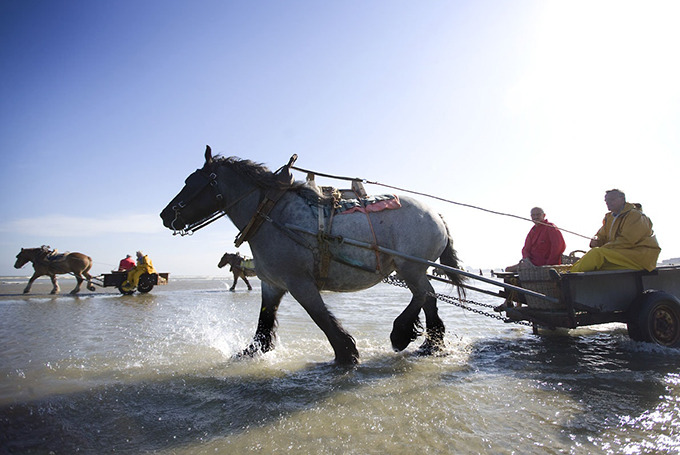Best UNESCO Cultural Heritage Experiences
The Colosseum still stands in Rome. We can see it, touch it, tour it. But the only way the traditional craftsmanship of violin-making has survived in the Italian town of Cremona since the days of Stradivarius has been its passage from one generation to the next. This is an example of "intangible cultural heritage," and in many ways, it's much harder to preserve than ancient architecture—and just as valuable to the world. So in 2003, UNESCO established a convention to safeguard intangible cultural heritage, which includes knowledge and practices, plus the related "objects, artifacts, and cultural spaces" that groups consider part of their cultural heritage and identity. The goal is to help spread awareness in order to preserve these activities, which could be dance or artisanry or even how to make a type of food (the tradition of making that kimchi you love was inscribed first in 2013). The committee will be meeting in early December to choose 2017's additions. Will it be pinsi, the Indonesian art of boat-building? Maybe kok-boru, a traditional Kyrgyzstani horse game, will make it. To quell our excitement, we took a look at some of the most interesting designations to date.
Jeju Haenyeo
On an island off the southern coast of South Korea, a group of women dive without breathing equipment—sometimes staying underwater for up to two minutes, sometimes going as deep as 10 meters—in order to harvest seafood by hand. They've done this for generations, although their numbers are dwindling.
Tinian Marble Carving
The ancient sculptor Phidias may have put Greece on the map for his intricate marble work at the Parthenon in the fifth century BCE, but the island of Tinos has kept it there. To this day, master sculptors mentor apprentices who learn how to craft the stone into beautiful fountains, buildings and monuments.
Burundi Drumming
If you've never heard of the Master Drummers of Burundi, get to YouTube, stat. The dance of the royal drum combines poetry, song and movement, all set to powerful beats and played by at least 12 drummers. The ritual—performed as a VIP welcome and during special feasts—is an incredible display of energy and heritage.
Belgian Shrimp Fishing
Twice a week from June to September, fishermen ride their sturdy Brabant horses into the surf of the North Sea to collect shrimp. Dragging a chain over the sand creates vibrations that spur the shrimp to jump into the horse's net. Although only about a dozen families participate in this age-old tradition, the community appreciates their commitment—especially in June, during the annual Shrimp Fest.
Toquilla Weaving
Fun fact: The Panama hat has never really been a product of Panama. In fact, the toquilla comes from Ecuador. Its misnomer is a result of shipping routes; Panama was one of the first highly trafficked places where people wore the hats, so it became the gateway to the rest of the world. The brimmed hats are handwoven from the straw of the Carludovica palmata, a palmlike plant with sturdy fibers found in Ecuador and surrounding countries. The tradition of harvesting and weaving the straw has been passed through families for generations.
Chinese Shadow Puppetry
Master carvers meticulously craft intricate puppets from leather stained with pigments in this tradition dating back more than 2,000 years. A cloth is illuminated from behind, functioning as a "stage" for the puppets, which are controlled by the puppeteers of a troupe. These music-filled performances take place at special events such as weddings, religious holidays and birthdays.
Peruvian Scissors Dance
Clad in bright baggy pants and fitted jackets adorned with fringe, beading, embroidery and sequins, dansaq (scissors dancers) perform acrobatic leaps and movements in a challenge against one another, always stepping in time with the harp and violin that accompany their ritual. In their right hand, they strike together scissorslike iron rods in time to the music. The scissors dance—which reportedly began in pre-Colombian times and can last for hours—is still performed today during holidays and festivals.
Tango
From the working classes of Montevideo, Uruguay, and Buenos Aires, Argentina, rose one of the world's most iconic and seductive dances. Influenced and spread by several groups (including descendants of African slaves and European immigrants) living in urban areas of the Río de la Plata basin, the dance became popular in Paris and other cosmopolitan capitals, and has evolved with the musical and social landscape while maintaining its cultural importance to its countries of origin.
Royal Ballet of Cambodia
To learn the thousands of specific gestures that represent different symbols or concepts, girls began training starting as early as seven years old. Clad in elaborately embroidered costumes and hefty gold headdresses (depending on the character type, of which there are four), dancers tell a wordless story with their movements. This tradition of dance performance, begun more than 1,000 years ago, was nearly wiped out during the oppressive Khmer Rouge regime, which killed artists, musicians and dancers.
This article originally appeared on AFAR.









